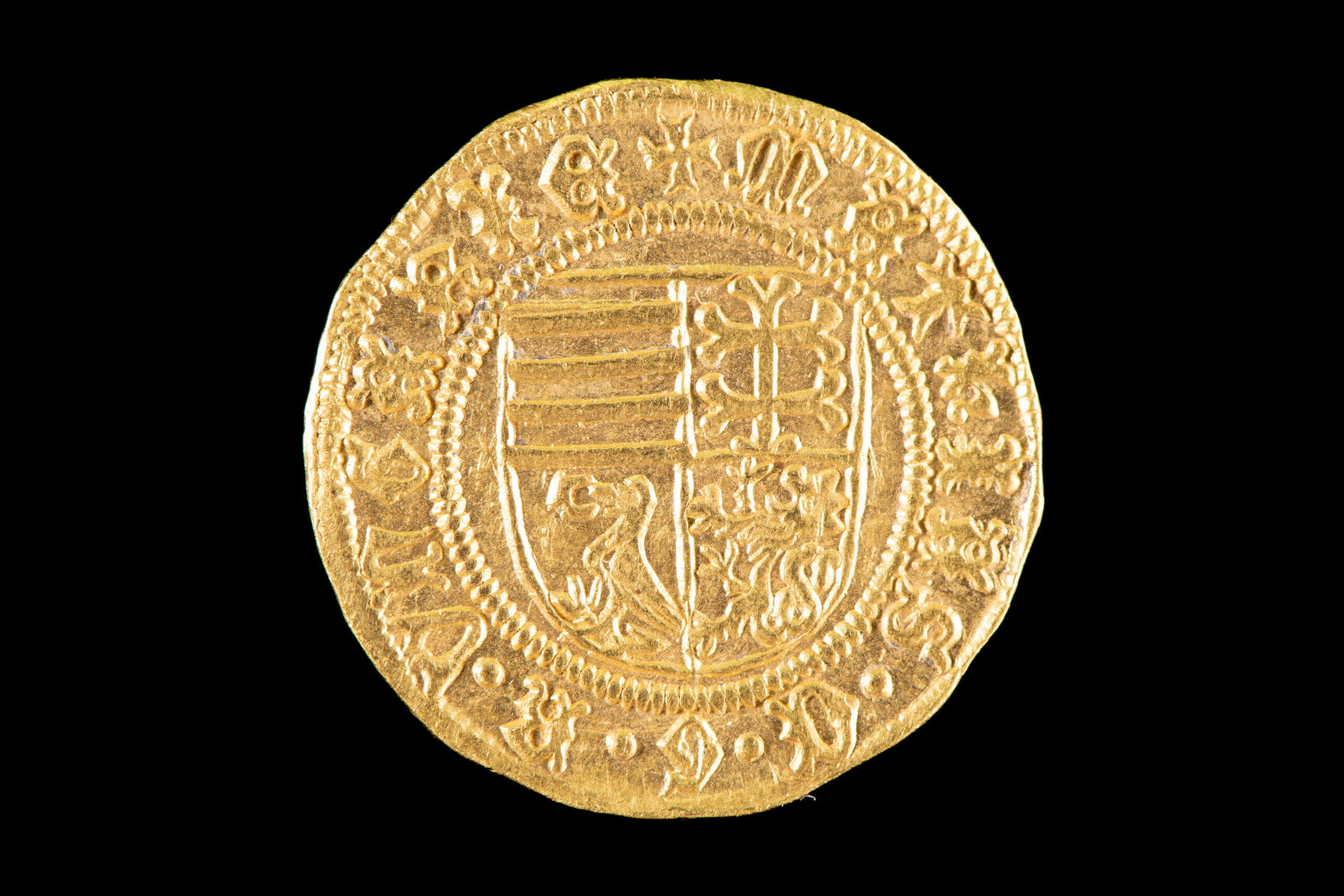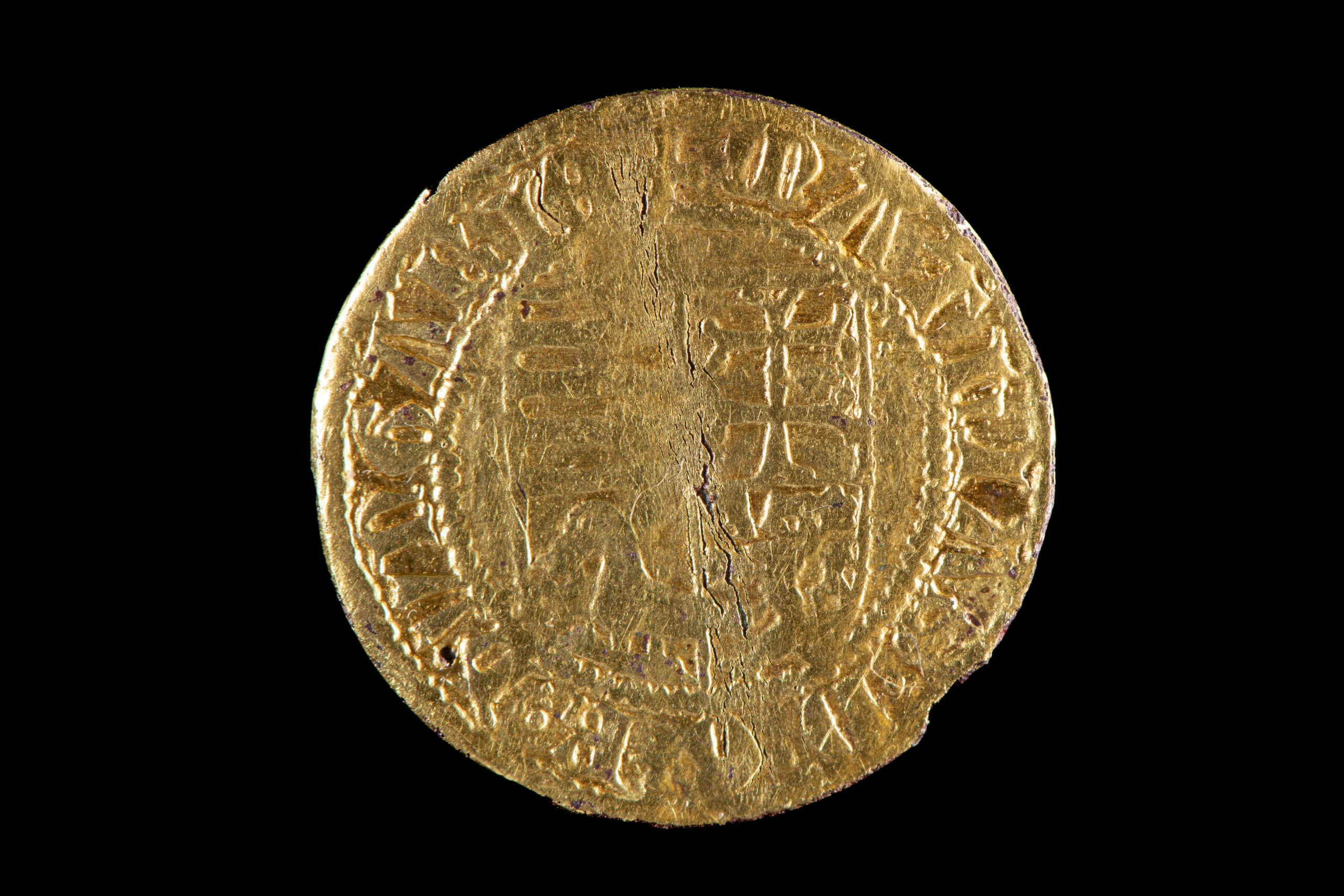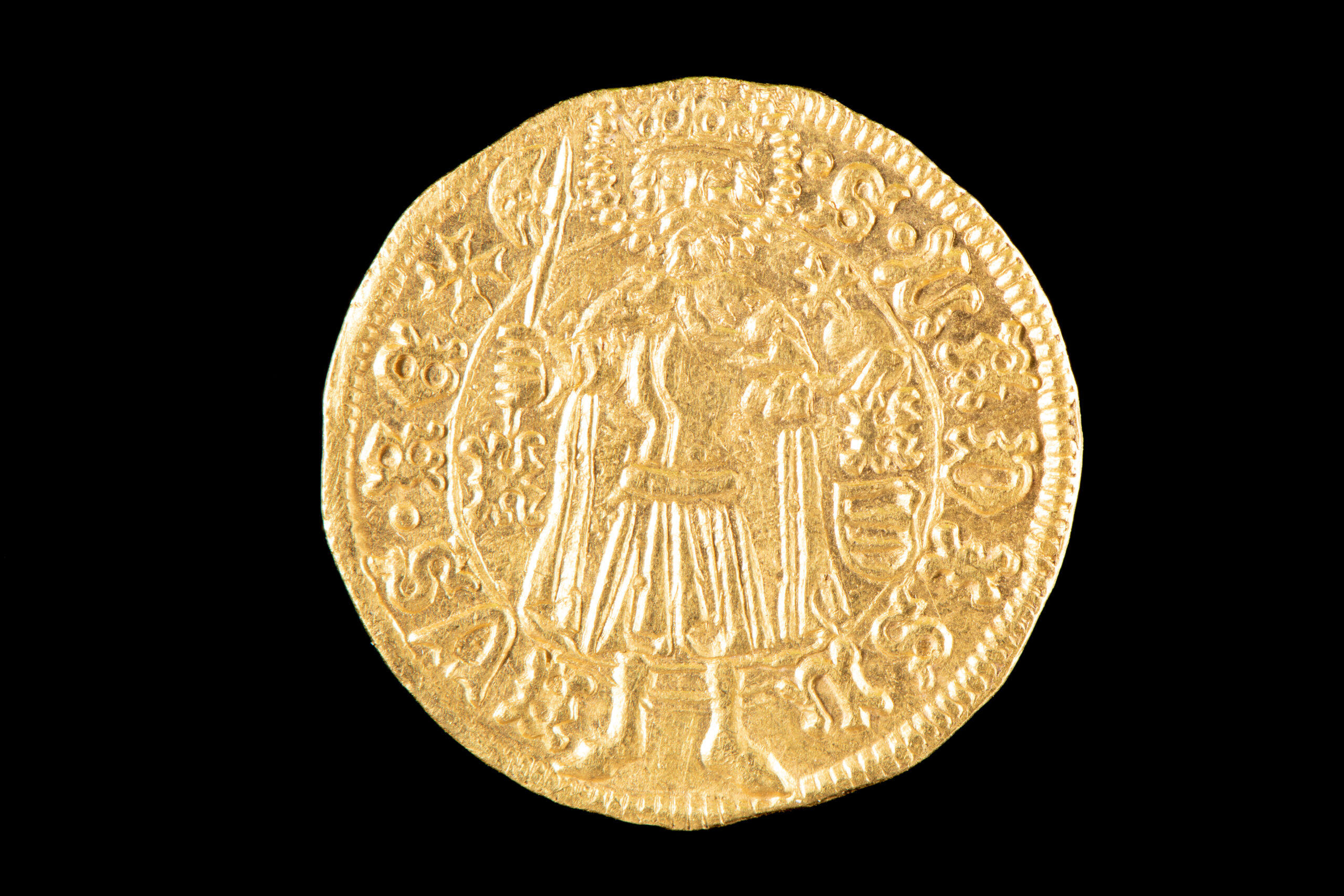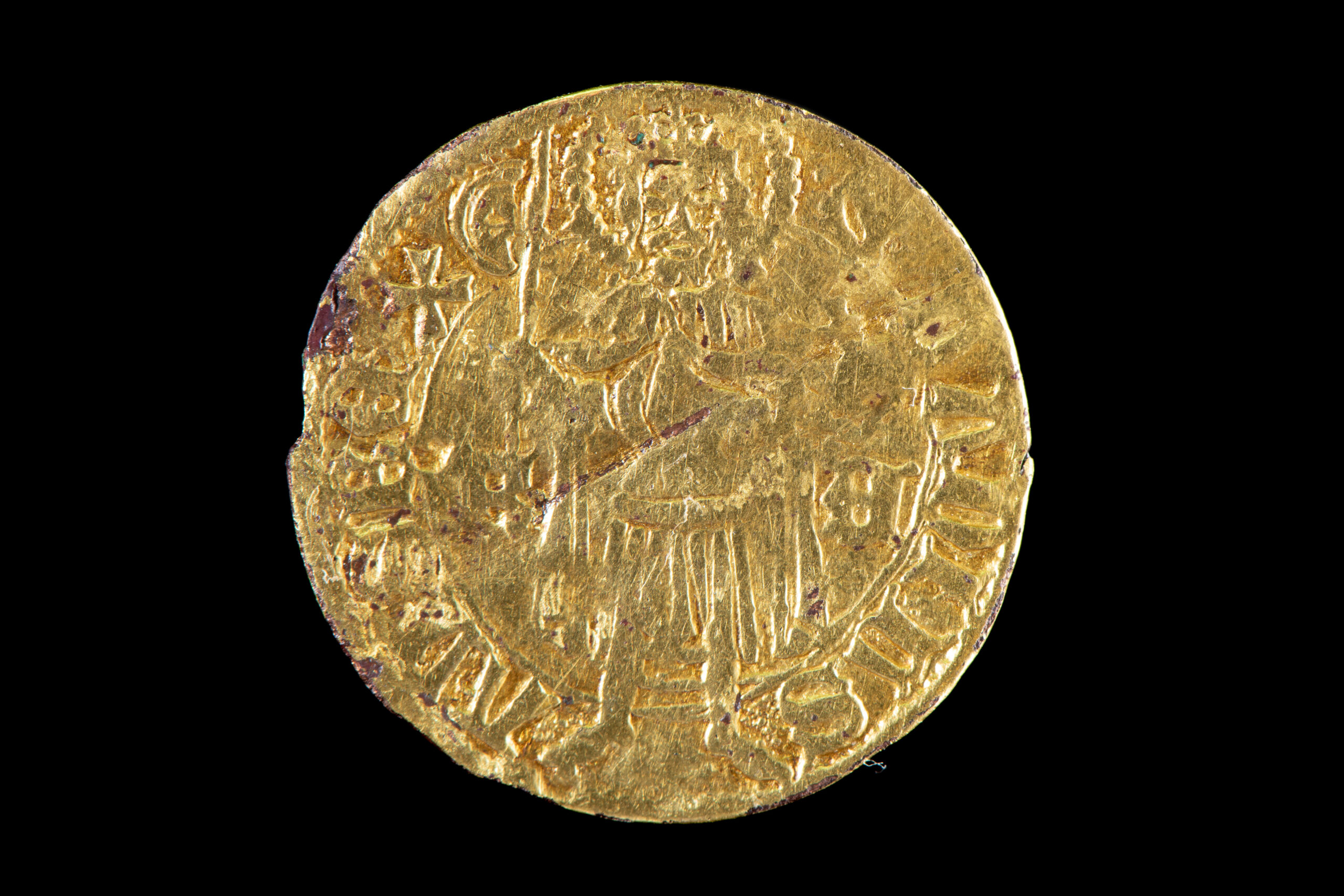Medieval gold coinage began in Hungary around 1325 under Charles I (1301–1342), and counterfeiting began at the same time. Copper imitations, for example, are known from a mid-15th-century coin hoard found near the Slovakian village of Ürmény (now Mojmírovce), which also contained copper “gold forints” minted by Sigismund of Luxembourg (1387–1437).
Marek Budaj, a researcher at the Slovak National Museum, subjected it to scientific examination and concluded that the counterfeit had been made to resemble the genuine coin by means of a process known as fire gilding: the surface of the coin was covered with a gold amalgam consisting of a mixture of gold and mercury, which was then heated. While the mercury evaporated under the effect of the heat, a thin layer of gold remained on the surface.
The BTM Medieval Collection has two recorded counterfeit gold coins, both of which can be dated to the reign of Matthias I (1458–1490) and classified as the so-called coat of arms type. The location of one of them is uncertain, while the other was found during excavations at the Buda Castle (archaeologist: László Gerevich). Upon closer inspection, it can be seen that the coins were actually made of copper and then coated with gold, but this coating began to wear off over time.



